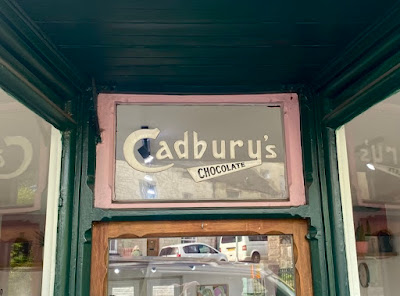Tea and biscuits
Walking around the centre of Reading, I was struck by the occasional architectural gem that survives among a crowd of tawdry modern shop fronts. One particular pleasure was this glorious facade of brick and terracotta, the W. I. Palmer Memorial Building in West Street. It is named for William Isaac Palmer, who became one of the partners in the firm of Huntley and Palmer in 1857, a company that was soon to be the world’s largest manufacturer of biscuits. Biscuits (along with the town’s two other principal industries, beer and bulbs*) brought many jobs and much wealth to Reading. W. I. Palmer became personally very rich, and spent some of his money on civic and philanthropic projects, from helping to fund the new Town Hall and library to his enthusiastic support of the temperance movement.
The Palmers were Quakers and although Quaker beliefs do not forbid alcohol, its followers in general either do not drink or do so very moderately. William Isaac Palmer was a leader of the Reading Temperance Society for much of the second half of the 19th century (he died in 1893) and this meeting place for the movement was rebuilt in 1880s and 1890s and dedicated to his memory. The architect of these improvements and embellishments was F. W. Albury, a local man who was elected Fellow of the RIBA in 1875, when one of his proposers was Alfred Waterhouse, himself a great exponent of this kind of terracotta decoration. Much of the terracotta on this building – moulded into the forms of leaves, classical columns, and inscriptions – was made to Albury’s specifications by Royal Doulton in London.
The temperance movement was successful in steering many away from ‘strong drink’ in the Victorian period and later, but by the 1950s was much more concerned with educating people about the dangers of alcohol. In Reading, the society also sold non-alcoholic drinks and started the Temperance Building Society to provide home loans. Eventually the society moved to different premises and the upper floors of the W. I. Palmer hall were converted to apartments. From the outside at least, it must make a splendid building to come home to.
- - - - -
* The horticultural kind, cultivated by Sutton’s Seeds.
Terracotta name plaque, W. I. Palmer Memorial Hall, Reading







